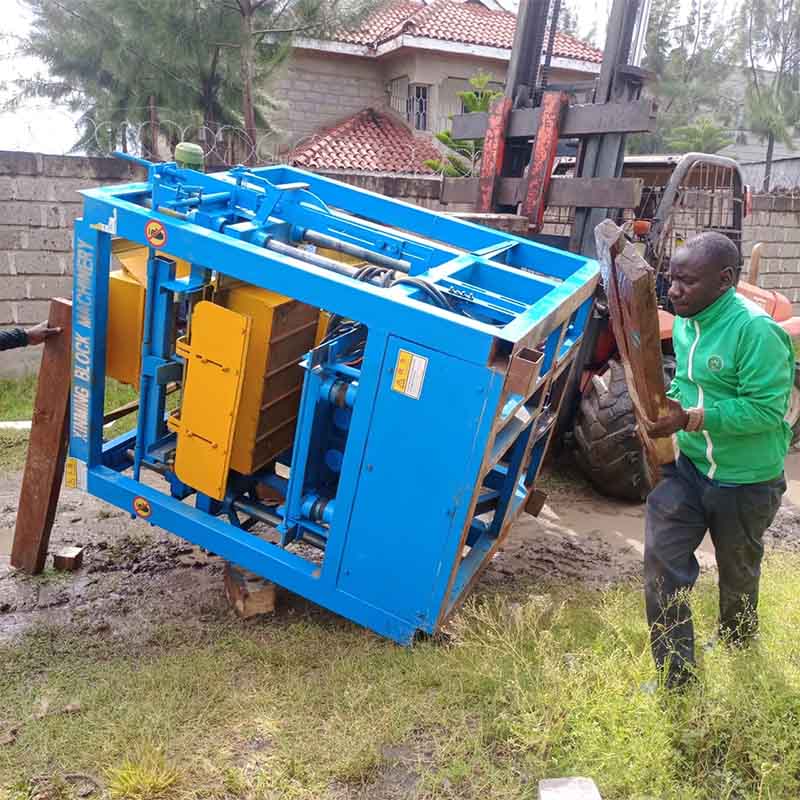
Image source Aiweibrickmachine
Environmental Impact and Waste Reduction of Fly Ash Bricks Plants
Fly ash brick plants have a significant positive impact on the environment and contribute to waste reduction in several ways:
1. Waste Utilization: Fly ash brick plants repurpose a waste material, namely fly ash, which is a byproduct of coal combustion. By using fly ash as a primary ingredient in brick production, these plants reduce the amount of fly ash that would otherwise be sent to landfills, mitigating the environmental concerns associated with fly ash disposal.
2. Reducing Quarrying and Clay Extraction: Traditional clay brick manufacturing requires extensive clay extraction from quarries, leading to habitat destruction, soil erosion, and altered landscapes. By utilizing fly ash instead of clay, fly ash brick plants help conserve natural resources and minimize the ecological impact of quarrying.
3. Lower Energy Consumption: The production of fly ash bricks generally requires lower energy inputs compared to traditional clay brick manufacturing. This results in reduced greenhouse gas emissions and energy consumption, contributing to a lower carbon footprint and overall environmental impact.
4. Reduced Air Pollution: Utilizing fly ash in brick production prevents the release of pollutants and particulate matter that could occur if fly ash were left untreated or disposed of in landfills. This helps improve air quality and reduces the potential negative health effects associated with air pollution.
5. Conservation of Water Resources: The production process of fly ash bricks typically involves lower water consumption compared to clay brick manufacturing. This reduction in water usage contributes to the conservation of water resources, especially in regions facing water scarcity.
6. Carbon Sequestration: Fly ash brick plants often use less cement in their formulations due to the pozzolanic properties of fly ash. Cement production is a major contributor to carbon dioxide emissions. Using less cement means fewer emissions and a smaller carbon footprint associated with brick production.
7. Minimized Landfill Impact: The use of fly ash in brick production diverts significant amounts of waste material away from landfills. This helps extend the lifespan of landfills, reduces the need for new landfill sites, and mitigates potential groundwater contamination from landfill leachates.
8. Sustainable Building Practices: Structures built with fly ash bricks exhibit enhanced energy efficiency due to their better thermal insulation properties. This leads to reduced energy consumption for heating and cooling, promoting sustainable building practices and minimizing the carbon footprint of the built environment.
9. Promotion of Circular Economy: By utilizing waste materials like fly ash to create valuable building products, fly ash brick plants contribute to the principles of a circular economy. This approach emphasizes the reduction of waste generation, resource conservation, and the creation of closed-loop systems.
10. Environmental Regulations Compliance: Fly ash brick plants align with environmental regulations and sustainability standards, demonstrating a commitment to responsible waste management and eco-friendly construction practices.
11. Erosion Prevention and Land Rehabilitation: By minimizing the need for clay extraction from quarries, fly ash brick plants help preserve natural landscapes and prevent soil erosion. Land that would have otherwise been disrupted by mining activities can be conserved and potentially rehabilitated for other purposes.
12. Reduced Greenhouse Gas Emissions: Fly ash brick plants contribute to reducing greenhouse gas emissions through multiple avenues. They reduce the demand for energy-intensive clay brick manufacturing processes and also often require less cement, which is a major emitter of carbon dioxide during production.
13. Conservation of Biodiversity: By reducing the demand for clay extraction, fly ash brick plants indirectly contribute to the preservation of biodiversity. Habitats and ecosystems are less disturbed, supporting the health and diversity of plant and animal species.
14. Minimized Water Pollution: Proper disposal of fly ash and its incorporation into brick production prevent potential water pollution that could occur from leaching of contaminants from landfills. This safeguards local water bodies and groundwater quality.
15. Lower Construction Waste: The standardized dimensions and quality control measures in fly ash brick production result in fewer defective bricks and less construction waste. This reduces the burden on waste management systems and landfills.
16. Sustainable Construction Material: Fly ash brick plants provide an environmentally friendly alternative to conventional clay bricks, which require substantial energy for firing in kilns. The reduced energy consumption in fly ash brick production aligns with sustainable construction practices.
17. Carbon Neutrality and Circular Economy: Some fly ash brick plants explore carbon neutrality concepts by offsetting their carbon emissions through various means, such as carbon capture and utilization projects. This approach aligns with the circular economy principle of balancing resource consumption with regeneration.
18. Reduced Resource Depletion: By substituting fly ash for traditional raw materials like clay, fly ash brick plants contribute to the conservation of non-renewable resources. This aids in preventing resource depletion and maintaining resource availability for future generations.
19. Positive Community Impact: Fly ash brick plants often operate near coal-fired power plants, utilizing fly ash generated locally. This can have a positive impact on local economies, create jobs, and foster sustainable community development.
20. Longevity and Durability: Structures built using fly ash bricks tend to have a longer lifespan due to the durability and strength of the bricks. This reduces the need for frequent reconstruction and replacement, further minimizing waste generation.
21. Environmental Education and Awareness: The adoption of fly ash bricks and the practices of fly ash brick plants raise awareness about waste utilization, sustainable construction, and the importance of responsible resource management.
22. Reduction in Harmful Elements: Fly ash, when not properly managed, can leach harmful elements into the environment. Incorporating fly ash into bricks prevents such leaching, contributing to safer waste disposal and protecting ecosystems.
Fly ash brick plants serve as a testament to the potential for transforming industrial waste into valuable resources. As these plants continue to evolve and integrate innovative technologies, their role in waste reduction and environmental protection becomes even more prominent. By mitigating pollution, conserving resources, and promoting sustainable construction, fly ash brick plants make a lasting positive impact on the planet.
